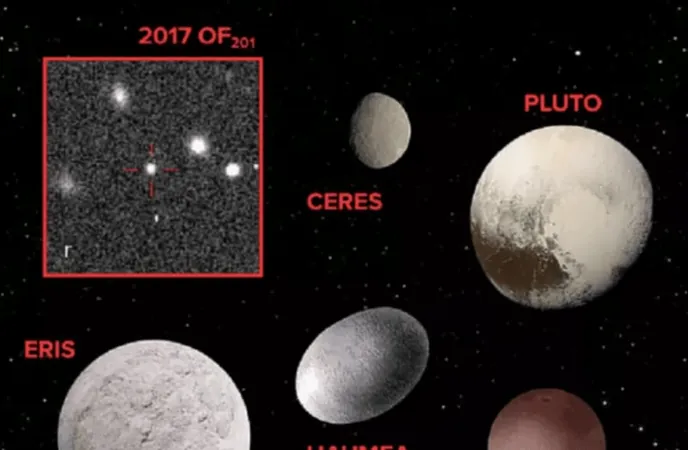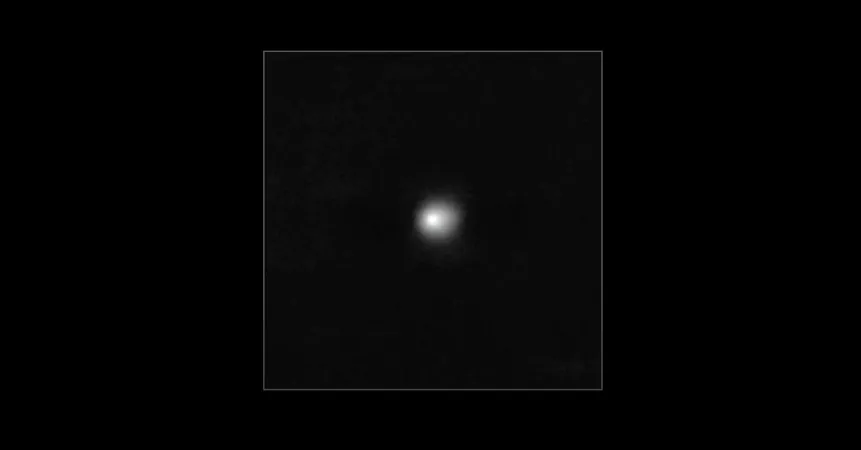
Astronomers Unveil Exciting New Dwarf Planet at Solar System's Edge!
2025-05-30
Author: Benjamin
A Distant Discovery: Meet 2017 OF201!
In a thrilling revelation from the cosmic depths, researchers have identified a potentia1 new dwarf planet known as 2017 OF201, located approximately 435 miles (700 km) wide. Discovered through remarkable observations made over seven years by telescopes in Chile and Hawaii, this celestial body zips along a highly elongated orbit around the sun.
Is This the Tip of the Iceberg?
Experts are buzzing with excitement over the existence of 2017 OF201, calling it one of the most distant visible objects in our solar system. This discovery challenges previous beliefs that the frigid space beyond Neptune and the Kuiper Belt was largely uninhabited. Contrary to those notions, the Kuiper Belt is teeming with icy treasures!
A Journey Through Time: The Orbit of 2017 OF201
Taking an astounding 25,000 years to complete just one orbit of the sun—compared to Earth’s yearly trip—2017 OF201 finds itself categorized among trans-Neptunian objects, orbiting beyond Neptune's grasp. Research lead Sihao Cheng from Princeton's Institute for Advanced Study notes that its peculiar, wide, and eccentric orbit hints at a fascinating history involving past migrations.
Size Matters: Comparing 2017 OF201 to Known Dwarf Planets
Though slightly smaller than Ceres—the smallest recognized dwarf planet at 590 miles (950 km)—2017 OF201 is estimated to possess about 20,000 times less mass than Earth and is 50 times lighter than Pluto. The precise shape of this new celestial intrigue remains under wraps, as its distant location makes it challenging to accurately resolve with telescopes.
What Lies Ahead for 2017 OF201?
Currently positioned a staggering 90.5 astronomical units from the sun—90.5 times the distance of Earth—2017 OF201's orbit oscillates widely. It can stretch out to more than 1,600 astronomical units, occasionally drifting closer to the sun than Pluto itself.
The Bigger Picture: Implications for Planet Nine
Cheng suggests that this newly discovered object could reshape our understanding of the solar system. 2017 OF201’s unique orbit does not conform to the known clustering patterns of other trans-Neptunian objects, fueling ongoing debates about the possible existence of a mysterious ninth planet, often referred to as Planet X or Planet Nine.
The finding was recently announced by the Minor Planet Center, and while it awaits peer review, many astronomers believe that 2017 OF201 is just the beginning. "If there's one, there could be hundreds more like it, lurking in the shadows of the solar system," Cheng adds, leaving us on the edge of our seats for what may be uncovered next!









 Brasil (PT)
Brasil (PT)
 Canada (EN)
Canada (EN)
 Chile (ES)
Chile (ES)
 Česko (CS)
Česko (CS)
 대한민국 (KO)
대한민국 (KO)
 España (ES)
España (ES)
 France (FR)
France (FR)
 Hong Kong (EN)
Hong Kong (EN)
 Italia (IT)
Italia (IT)
 日本 (JA)
日本 (JA)
 Magyarország (HU)
Magyarország (HU)
 Norge (NO)
Norge (NO)
 Polska (PL)
Polska (PL)
 Schweiz (DE)
Schweiz (DE)
 Singapore (EN)
Singapore (EN)
 Sverige (SV)
Sverige (SV)
 Suomi (FI)
Suomi (FI)
 Türkiye (TR)
Türkiye (TR)
 الإمارات العربية المتحدة (AR)
الإمارات العربية المتحدة (AR)